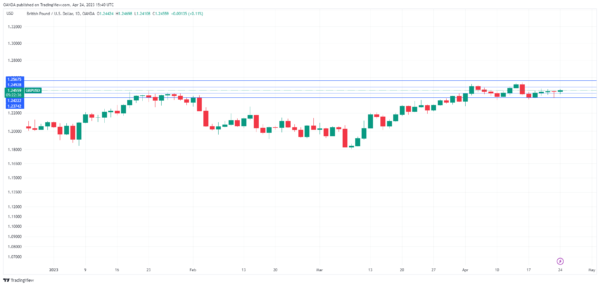- British pound showing limited movement
- UK retail sales fall
- PMIs show manufacturing decline, services accelerate
British pound shrugs off weak retail sales, mixed PMI data
The week ended with mixed data out of the UK, and the British pound fell 0.80% but managed to recover and ended the Friday session unchanged. Retail sales fell by 3.1% y/y, matching the estimate and following -3.5% in February. The core rate slipped 3.2%, below the estimate of -3.1% and the previous release of -3.0%. On a monthly basis, retail sales fell by 0.9%, as the unusually rainy weather kept shoppers away.
The soft retail sales numbers are a result of high interest rates and double-digit inflation, which has taken a nasty bite of consumers’ disposable income. The cost of living crisis has caused consumers to slash household spending, which is a key driver of economic activity. There was a silver lining, as GfK Consumer Confidence improved in April from -36 to -30, its highest level since February 2022. This beat the estimate of -35 and the index rose for the third month in a row. This could be a signal that consumers, although struggling, believe the worst is over.
UK PMIs, also released on Friday, were a mixed bag. The numbers reflect a global trend, as manufacturing continues to struggle while the services sector is getting stronger. Manufacturing PMI slipped from 47.3 to 45.5, shy of the estimate of 48.0 points. It was a ninth straight decline, with readings below the 50.0 level. It’s the opposite story for business activity (services), which rose from 52.9 to 54.9, beating the estimate of 54.9. This was the fastest growth in a year as services continue to drive the UK economy.
GBP/USD Technical
- There is resistance at 1.2494 and 1.2568
- 1.2423 and 1.2373 are providing support














